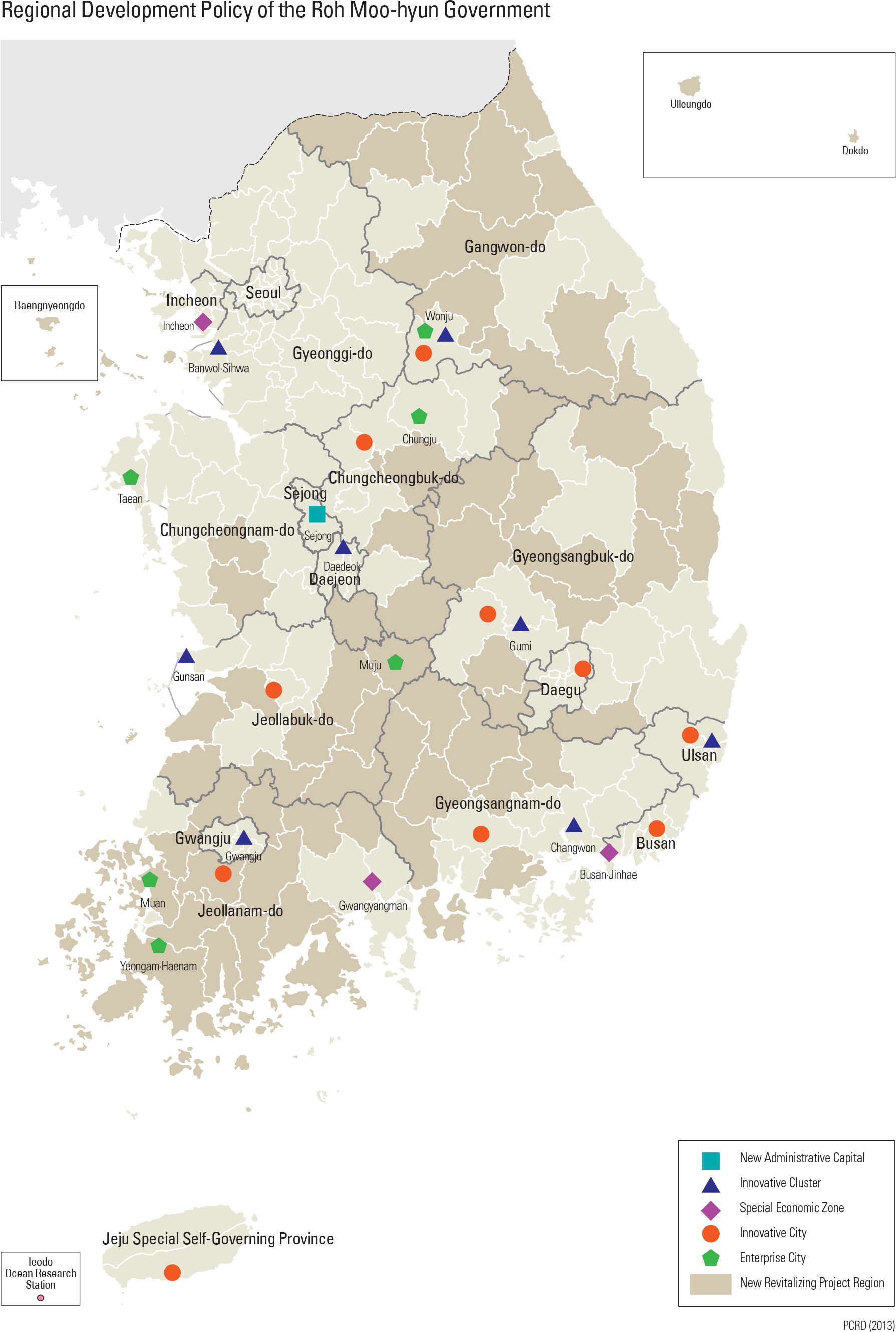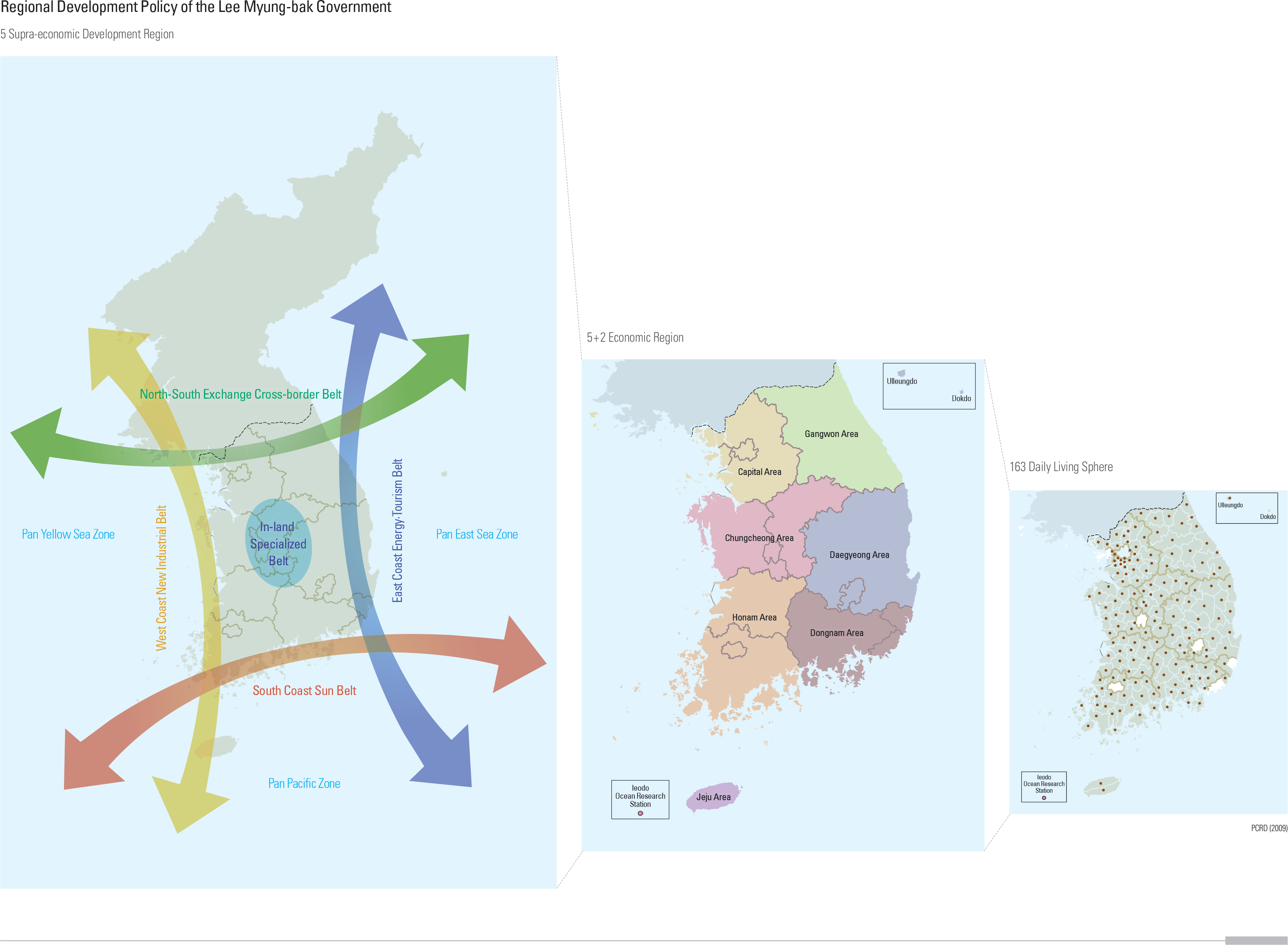The Roh Moo-hyun government (2003 - 2008) identified two major regional problems: the deepening regional disparity due to the capital region’s polarization and the capping of national income at 10,000 USD-both of which resulted from the inherent limits of an extensive growth strategy. In response to these problems, the government adopted a vision of regional policy that aims at establishing a multi-centered regional development network. This network of initiatives was meant to be innovative, quality-oriented, and decentralized so as to optimize its value to a specific region and its people. The government presented a multi-faceted policy scheme that included innovation policy, balance-oriented policy, industrial policy, spatial policy, and quality-oriented development policy. For the execution of this approach, it also established an implementation system administered by the Presidential Committee for Balanced National Development and the Special Account for Balanced National Development. In addition, the Roh Moo-hyun administration’s innovation policy, industrial policy, balance-oriented policy, and decentralization policy all utilized the existing administrative units of Metropolitan City, Do, Si, Gun, and Gu (provinces, cities, counties, and districts) as basic spatial units for regional policy.
The Lee Myung-bak government (2008 - 2013) identified the following major problems affecting regional development: the weakening global competitiveness of regions, the widely dispersed small scale investments by administrative units, poorly differentiated development, insufficient regionally led development capability, consumptive regional competition, and regional conflicts. In response to these problems, the government established a vision of regional policy that sought to create competitive regions in order to secure jobs and improve quality of life. Furthermore, the new policy aimed to form economic regions that could respond to the globalization trend. It also initiated developments based on regional features. It organized regionally based development through decentralization. It also set out to emphasize regional autonomy, and cooperation and codevelopment across regions. For policy execution, it also established an implementation system administered by the Presidential Committee for Regional Development and the Regional Development Special Account. In addition, the government reclassified the 16 existing Metropolitan Cities and Provinces into seven separate Economic Regions. It implemented leading industry projects accordingly, including projects focused on the creation of talent through education along with 30 primary social infrastructure projects. It also presented the Seven Supra-economic Regions Development Plan in order to promote inter-economic regional cooperation and global cooperation with neighboring countries.

